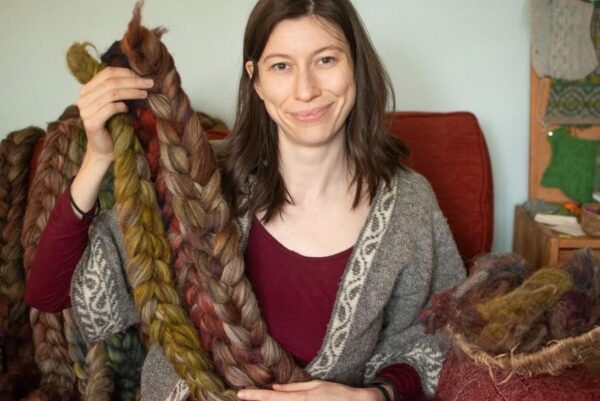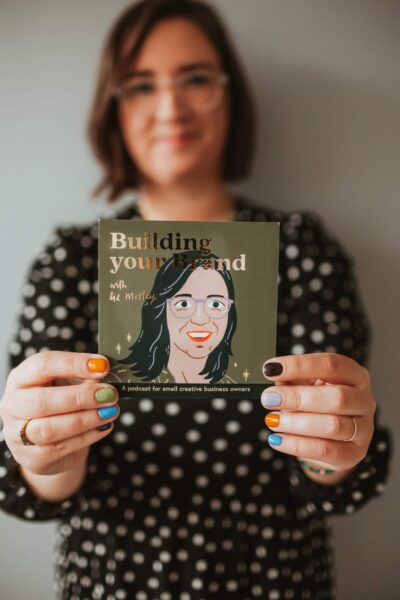A link from someone else’s website to your website is called a backlink and they are generally so flippin’ great for search engine optimisation (SEO).
If you want to pause right here and dive into the world of linking for SEO, I recommend our previous blog post which beautifully explains backlinks and how to build them, 7 simple and free SEO backlink building tips using only your existing contacts and relationships.
Linking between two relevant websites helps Google to build and expand a picture of what your small business is all about, gaining contextual information like where you are, what problems you might solve, and the topics you can help with – this is super valuable.
However, linking between two websites that have nothing in common ain’t gonna tell Google anything.
In ye olden dayses, spammy mass backlink building was a popular SEO tactic – this is when two websites link to each other just to get that juicy SEO juice, not because they were actually relevant. These contextless links are called reciprocal links (each link is reciprocated by the other website) and are a type of black hat (AKA naughty) SEO that you should totes avoid.
But what if you and your small business mate in a similar niche wanna use each others’ resources for a mutual benefit? Well, that’s a great plan. Here are some ideas of how to create some nice content that is both valuable to your audience and has some lovely backlink SEO action too.
1. A two-part blog series where one part is hosted on your website and one part on theirs
…with links between them. I think the links part was probably obvious, but I wanted to write it straight away, just in case it’s so obvious that you forget to do it. We’ve been there.
I’ll bet that as a small business owner, you have a bunch of friends running small businesses that have some sort of niche crossover – am I right? You can use those connections to both of your benefits, by writing a blog post in two parts. The part they write can be on your website, and vice versa.
The subject matter is up to you, but as long as it’s an opportunity for both of you to share your unique points of view and and you believe your audiences will feel compelled to read the other part on your pal’s website, it’s a win-win-win (both small business owners get an SEO win, and the person reading gets some helpful info).
Rumour has it that Studio Cotton founder Aime is currently working on exactly this with Therese from Small Business Collaborative. Hopefully I’ll remember to come back to this blog post and link to it once both blog posts go live.
2. Guest blogging on each other’s websites
I guess this is sort of similar to point one, except the blog posts don’t have to be related. For example, we got our buddy and copywriting whizz Bonnie to write this very helpful post for the Studio Cotton blog: 5 expert tips for outsourcing your website text to a professional copywriter.
We knew that it’d be really helpful for our audience, and what better way to get that info than from someone in the copywriting industry. Plus it means we get to give someone we like a little SEO leg-up.
SEO friendly blog content that Google loves
We can turn your expertise and opinions into juicy, SEO-rich content for your website.

3. Interviewing each other on your individual areas of expertise
Interviews and Q&A blog posts are a brilliant way to make readable content, and they can be pretty easy to produce too. For our Q&A posts and our clients’, we send out a Google Form of all the questions we want to ask, making sure to include the basics such as the small business name, when it was founded, and where they’re based.
It’s quick for the interviewee to complete, and quick for us to turn that content into a blog post – all you really need to do is add a lovely conclusion and a few photos. Oh, and don’t forget those links, obvs.
Here’s an example of one of our Q&As, which we sent to our freelance website designer Hannah who’s also a very talented and gothy jewellery designer: Dainty, cool and dangerous: meet Hannah from SLAB Jewellery.
4. Ask your mates to contribute to your rundowns and listicles
Maybe you know why we love listicles so much already, and maybe you don’t. If you’re in the latter camp, you should probs read our blog post, 6 reasons to write listicles; the easiest blogs for your small business. A listicle is basically an article in the form of a list.
This is a great type of article to contribute to – sometimes all that’s needed is one or two sentences, and boom! You get a lovely lil backlink. Wow, it really is that easy.
You only need a quick scroll through the Studio Cotton blog to see how often we use this format.
For our blog post 5 influencers tell us how they really feel about gifting, I asked some of my pals in the influencer world for their honest opinion on gifting, and for 8 small business owners tell us what they would do if Santa Claus gave them £5,000 Aime called upon some of her small business friends.
5. Including anecdotes, stories and tangents that include your friends
We’ve got another blog post in the works about how to make your blog posts subjective, and why it’s important. A subjective blog post often includes anecdotes and tangents that only you could’ve written, and d’ya know what? You guessed it – you can include your small business buds in those anecdotes too.
I’ve been a blogger for around 13 years, and I love it when I can include fellow bloggers and influencers in Studio Cotton blog posts. In 6 local Bristol bloggers who love collaborating with small businesses I got to write about some of my local blogging friends and how great I think they are.
Then in 13 bloggers and influencers tell us what they love (and hate) to see in brand pitches I got to mention a whole load more of my mates and why it’s so nice to follow their blogs and Instagrams.
6. Use your pals as examples to illustrate your points
There’s probably a point to that blog post you’re writing, so why not reinforce that point by dropping your small business bud as an example.
In 5 creative team headshot ideas for when you can’t hire a professional photographer I literally used a mate to illustrate my point, because she’s an illustrator. I use the word “mate” loosely here, as really we’re only Instagram acquaintances, but it still definitely counts.
If you are gagging for some more blog posts about SEO, have a read of this super handy one, 7 FREE SEO tools I check when someone tells me their SEO sucks, and in case you missed the link earlier in this blog post, 7 simple and free SEO backlink building tips using only your existing contacts and relationships.
Now go forth and email your small business buds for some mutual backlink action.























